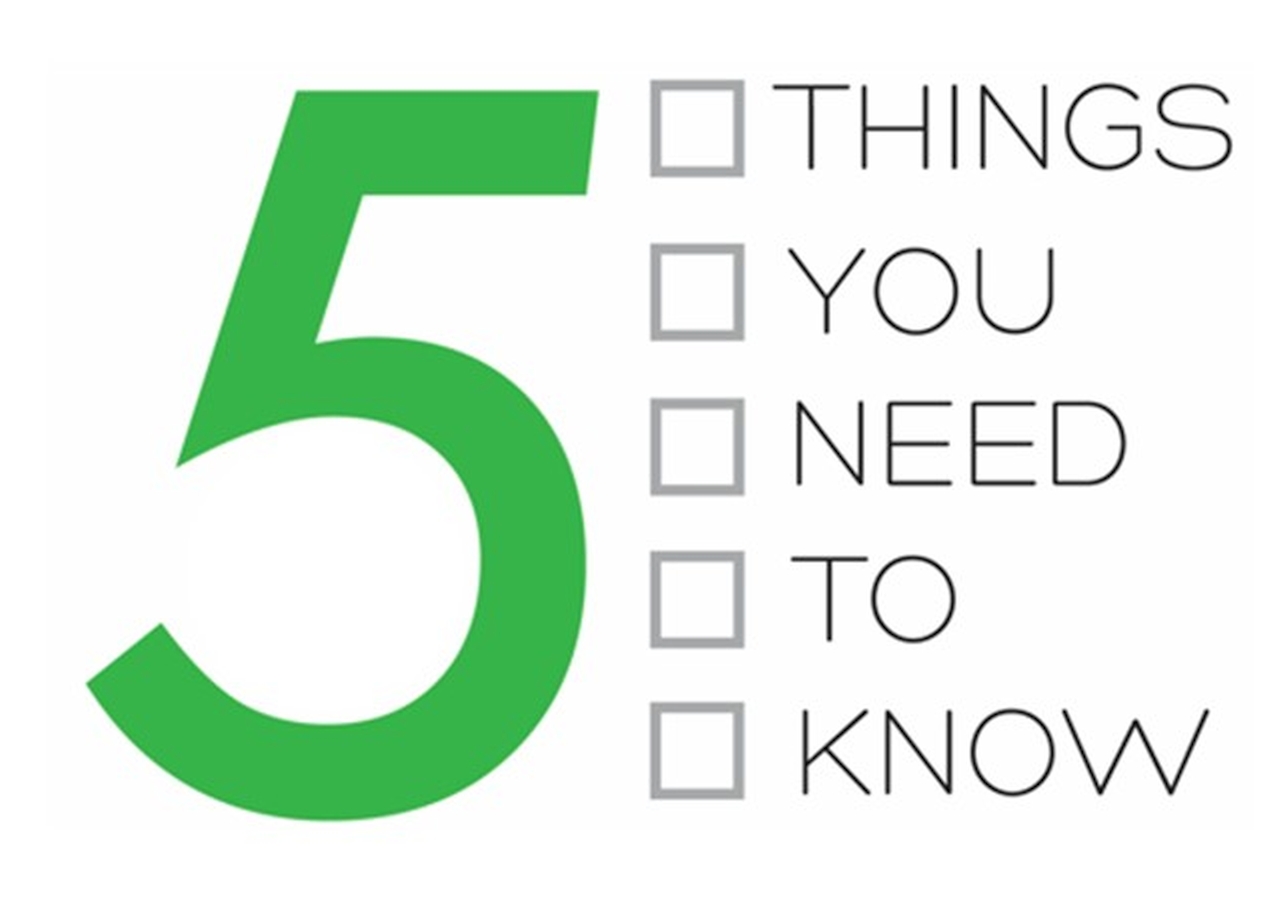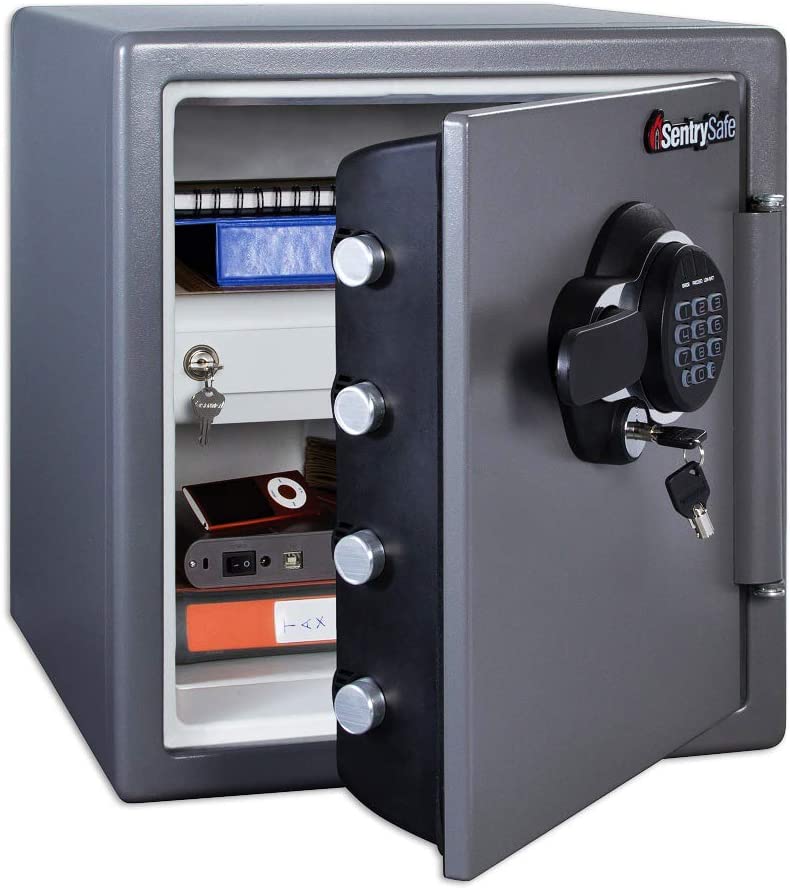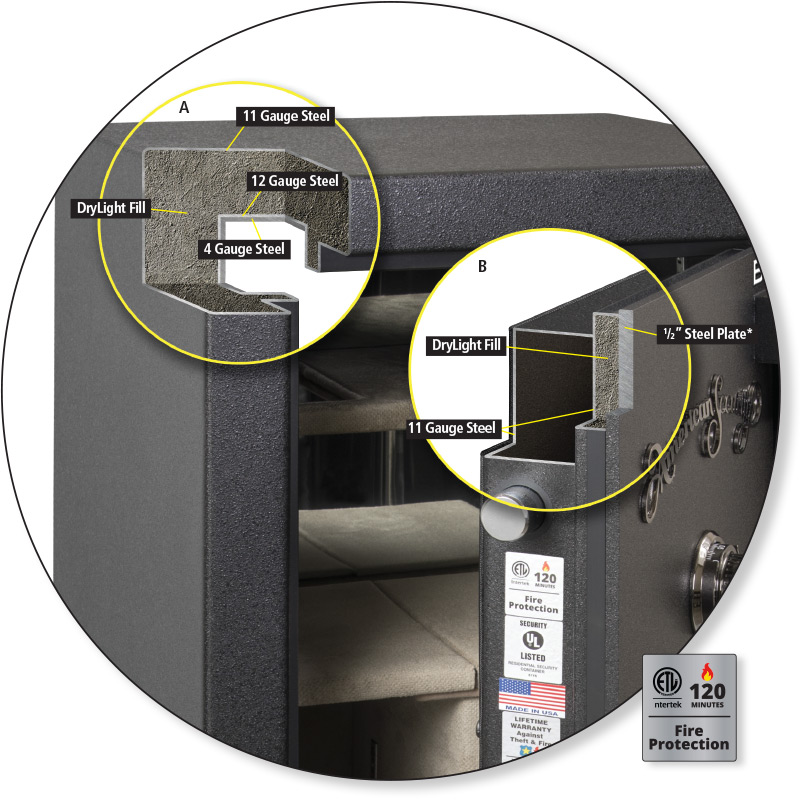
FREE SHIPPING
*On Orders Over $250We Call Within 48 Business Hours to Confirm Order
FREE SHIPPING
*On Orders Over $250We Call Within 48 Business Hours to Confirm Order
Is the cheapest safe the best safe?
Is the most expensive safe the best safe?
Are those safes on the "top" lists of safes that Google loves to rank #1 the best safes?
No, No, and definitely no.
When choosing which safe to buy factor in the thickness of door & body, bolt size, and the safe's weight. Use those factors to buy the best safe at your budget. Ignore biased 'top' lists; reviewers likely never touched those safes. We're going to dive down into these factors.
The 5 Most Important Factors that Make the Best Safe Are:
A good deal is important when buying a safe, but sometimes what appears to be a good deal isn't because the safe won't meet your needs. Once you have a budget in mind, you need to find the right safe for what you're putting into it and the best-built safe at that price point.
Which safe you need will depend on what you're putting into the safe. There is some great information about Which Type of Safe is Right for You in our article section.
 This Safe Can Be Opened Using a Magnet
This Safe Can Be Opened Using a MagnetSummarizing that information:
Your local safe locksmith likely won't carry big-box-store cheap safes. They offer zero protection against theft. Many are now made with plastic exterior wraps. One very common manufacture discovered that their safes that they had been building for many years, could easily be opened using just a magnet. That's why they are so inexpensive, their main function is not to protect content but to offer you fire protection.
We do carry a line of inexpensive home safes that are a significant step above those in the big box store. They are all metal, more secure and offer good fire ratings. But they are a little more expensive than those cheap safes.
Even our inexpensive, value home safes won't keep out someone trying to get it, but they will take considerably more effort than a plastic safe.
When you want security, to keep people out of your safe, the security level of the safe determines the price. "You get what you pay for..." applies here 100%. Once you know the level of security you want, you can make an informed decision and compare similar rated safes for price.
This should be your number one concern.

When a safe is attacked by a novice, it is usually attacked through the front door (which really doesn't make sense because the weakest point of a well built safe is normally the sides). But smash and grabbers tend to go for the door because we've been taught our hole lives that a door is the way to get in.
By door thickness we do not mean overall door thickness!
Overall door thickness is irrelevant. The two biggest components of overall door thickness are fire board and air. When most consumers see a safe advertising 5" door thickness next to a safe with a 4" door thickness, they view the one with the 5" thickness as better. This is how advertising tricks you: it may not be the case. Should the 5" door be 90% air and the 4" door 50% steel, the 4" door is a far superior door.
You need to consider the steel thickness covering (protecting) the door. In order of best to worst, door thickness will either:
 Those big-box-store gun safes are usually protected by only a thin sheet of metal wrap around the fire board on the front door. They can be pried open in less than 60 seconds.
Those big-box-store gun safes are usually protected by only a thin sheet of metal wrap around the fire board on the front door. They can be pried open in less than 60 seconds.
Safes like this usually promote the entire door thickness or a "combined" door thickness. These safes can have door wraps thinner than just 16 gauge thick, about the thickness of a penny.
Safes with anti-drill plates provide additional security to protect the safe from being drilled, but not from prying. So they're a bit better than just wraps.
When you do see that they have an anti-drill plate you will normally find that the manufacturer is using thicker steel than one without an anti-drill plate. Typically from 0.11 to 0.18 inches thick, so there may be some additional added value beyond the anti-drill plate.
If you are putting anything of real value into the safe, you want a door with a solid steel plate of at least 3/16 (0.18) to 1/4 (0.25 inches) inches. That is the steel thickness that will stop crowbars.
Sometimes this steel plate exists under the safe's sheet metal wrap (for cosmetic reasons), but it needs to be there. When it is, the safe manufacture is going to tell you. Don't assume, they will highlight it in their literature because it is a big selling feature.

If you have high-valued items, look for safes with a 3/8 to 1/2 inch steel plate over the entire door! These are the most expensive safes, often carrying residential burglary ratings or TL-15 to TL-30 burglary ratings. A TL-30 rated safe is the highest rating available to the general public (i.e. not a bank vault but as close as you can actually purchase). For examples of safe ratings and what you get with them check out our How to Choose the Right Safe page.

The weak point of almost all safes is through the side or top. These are often protected by just a sheet metal wrap.
You want to know. "How thick is the steel body?"
Unlike the door, access through the side of the safe is done by cutting through the metal to create a big hole, as opposed to prying the door. You can minimize the risk of cutting through the body by positioning the safe in a location where the sides and top cannot be accessed via tools.
We've seen big-box-store safes with sides of plastic or metal just 0.06 inches (1/16 of an inch) thick. If you have no valuables in the safe, this is fine, but if you want to protect anything of value, do not buy one of these safes.
For valuables, you want to look for wraps that are at least 11 gauge metal (1/8 or 0.125 inches thick). Our favorites have an 8 gauge wrap which is 0.17 inches thick.
Pro tip: When thickness is given in gauge of steel instead of millimeters or inches, the lower the gauge, the thicker the steel. 10 gauge is thicker than 12 gauge, 12 gauge is thicker than 14 gauge, etc....

For high dollar valuables, you want a safe that uses a concrete slurry instead of fire board to get their fire rating. The concrete is poured between the inside and the outside of the safe walls, usually 2 inches thick, and contains a composite of material (called DryLight by one manufacture) that eats through drill bits trying to penetrate it. Some burglary-rated safes and nearly all TL-15 / TL-30 safes use a cement composite.
Did you watch the video above? If so, you already know the strength of a bolt is so important. In that video the entire length of the bolt is barely long enough to secure the door when locked. Underneath the bolt, it is hollow and the bolt is held in place by what appears to be a thin, narrow, aluminum rod. Do you want that to be the only thing between your valuables and a thief?

When considering safe bolts look at the following:
If a thickness is not available, assume it is the same as the side wall. The thicker the metal where the bolts come out, the more secure the door will be when the safe is shut (it is harder to bend and distort the metal when trying to pry open).
You want a bolt at least 2 3/8 inch long. The longer the better.
Once you've decided on the level of security you want, which translates to: steel thickness, fire rating, bolt strength, door plate, and size of the safe you need; you are ready to compare safes from different manufactures.
Pro Tip: Weight per unit volume will tell you which safe is built better.
Just calculate the weight per cubic foot for safes from different manufactures that are close in size to find out which safe is the better built safe.
This is only accurate when you are comparing safes that are similar in size. It will mislead you if you are comparing a small safe to a large safe since volume is a function of a cubed variable and goes up a lot as safes get bigger. But for similarly sized safes it's an excellent method.
Why?
Because it will help you determine the security variables you cannot see or know. The more weight in a safe the better built the safe is.
A safe manufacture might not tell you the length of the bolt, but if it is bigger/longer it will be heavier. The manufacture might not tell you how the bolts are secured within the door. The best use u-channel bolt work, cheaply made safes use a rod. The u-channel is much heavier.
When all else is equal, but one is substantially heavier, go with the heavier safe.
When it comes to those warehouse-brand safes, when you want a super cheap safe, super cheap is what you get. They will keep you kids out and protect from fire, and if that's all you need, they will do. But if you want theft protection for the content that's in that safe, you need something better.
For anything more than keeping honest people honest, features such as weight, steel thickness, bolt dimension, and door plate will help you decide which safe to buy and a way best suited to meet your budget requirements.